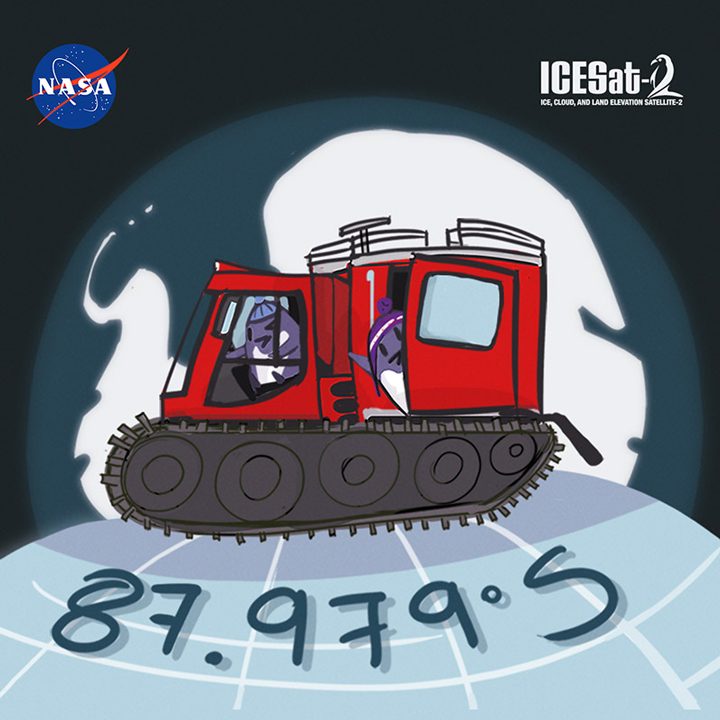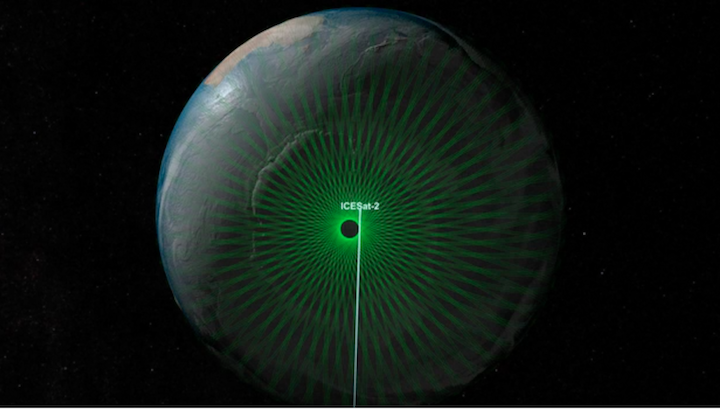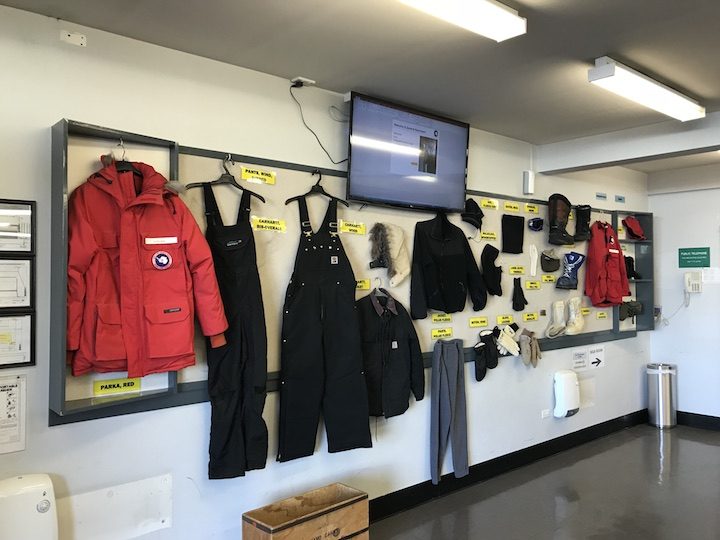Greetings from New Zealand!
Soon, we’ll report back from even further south. We’re headed to the heart of the Antarctic ice sheet, to collect measurements on the ground for the ICESat-2 mission.

While NSF calls us the 88S project, sometimes you need that extra precision. We’re NASA. (Logo design by Adriana Manrique/NASA)
ICESat-2 is a NASA satellite, scheduled for launch in 2018, that will measure the height of ice sheets, glaciers, and sea ice in unprecedented detail. Designed and built at NASA’s Goddard Space Flight Center, it will carry a laser instrument called the Advanced Topographic Laser Altimetry System (ATLAS). ATLAS will send out small pulses of laser light, and precisely time how long the light takes to travel from the instrument, down to the earth, and back. These measurements, along with the position of ICESat-2 in its orbit, and the direction ATLAS was pointing, allow us to determine the height of Earth’s surface wherever ICESat-2 goes.
But how do we know those measurements from space are correct? We take a sample of measurements on the ground, which we can check against data gathered by the satellite. Which leads us to Antarctica.

The green lines trace the path where data will be collected by the ICESat-2 mission. The tracks come closest to the poles at 88 degrees north and south, forming a dense network of crossing tracks. (NASA’s Scientific Visualization Studio)
Due to the particular orbit of ICESat-2, all the tracks for the satellite converge right around a latitude of 88 degrees south. Our plan is to travel to 88S and collect measurements of the ice sheet elevation around part of the circle at that latitude. We will compare our measurements with those from ICESat-2 shortly after launch to evaluate the performance of the satellite.
Kelly and I left the US last week after months of preparation, and are now en route! The first stop on our journey is Christchurch, New Zealand, where we recalibrate our internal clocks, collect the last of our cold-weather gear, and smell the roses before heading farther south. We are traveling along with science investigators and support staff working through the Antarctic Program of the US National Science Foundation. Christchurch has been the launching point for US (and New Zealand) field work in the Antarctic for decades, and we are grateful for the support of the NSF and our colleagues here in New Zealand. It is a huge advantage to follow in the footsteps of the thousands of other Antarctic program members who have gone before us.

An array of hats, jackets, and gloves are available at the Clothing Distribution Center in Christchurch NZ to keep us warm while we’re down “on the ice.”
As you might imagine, it’ll be cold where we are headed, and having the right clothing is critical. Today, we visited the Clothing Distribution Center to borrow gloves, hats, parkas, and other items to keep us warm and safe. Tomorrow morning, bright and early, we’ll return to the CDC, get kitted up, and head south for McMurdo Station, the U.S. hub of operations in Antarctica.
Fingers crossed, and we’ll report next from Antarctica!
-Tom Neumann and Kelly Brunt
Tags: Antarctica, ice, Icesat-2, polar, snow




Great article, thanks for sharing! Looking forward to your next additions on this great adventure.
Hello: Very exciting to read of your project and getting outifitted for McMurdo and elsewhere. My brother, John F. Barell, loved the Antarctic and was dedicated member of Operation Deep Freeze- he served proudly on Icebreaker Glacier. He had been passionate about this region and wrote several books on the subject.
He died two weeks ago- may there be a moment of silence or whatever you think to honor his commitment and LOVE of this mysterious and incredibly beautiful land. Thanks very much. Marcia
Hi,Welcome to Christchurch.
If you would like a brief break from training for trip you can visit Quail Island, across from Lyttelton, where Scott departed by ship from, after training on Quail Island ( which you can visit from Lyttelton ferry terminal)on a 1/2 day walk around the island.
Cheers,
So glad to see you’re there Kelly. Good luck to you and the sntire team. Do good work but have a good time too. Merry Christmas to you and all you’re cohorts! Happy and safe New Year too.
Omg. Please excuse the errors in my first post. Fast, fat fingers. Goodnight all.
Barb! Thank you so much!!!
Hi Kelly,
Have a wonderful trip. I hope to follow you.
Be safe you and the crew and above all, have fun and make memories!!
Barb! Thank you so much!!!
I’m looking forward to reading more of your progress reports. Such a unique research environment! Best of luck to the team.